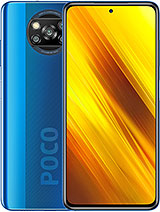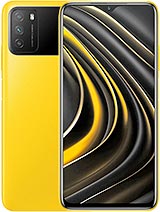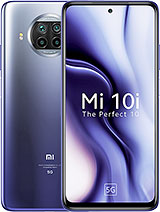Xiaomi Redmi Note 9T review

The competition
With a regular MSRP of €229 and n even lower "early-bird" special of €199 for the base 4/64GB version, the Redmi Note 9T falls nicely into the budget smartphone category. However, the key thing to remember is that the main angle Xiaomi seems to have for it is 'delivering 5G on a budget'. While there is certainly value to that, and we have no doubt affordable 5G is a desirable thing for certain users, the Redmi Note 9T doesn't necessarily constitute the best universal value offer out there.

Far from it, in fact. Cramming trendy 5G clearly meant sacrificing a few hardware bits here and there. Looking at the Chinese Redmi Note 9 5G as sort of the base from which Xiaomi derived the Redmi Note 9T for international markets on a budget, the lack of an ultrawide camera on the latter instantly sticks out. That and an unfortunate downgrade in charging speed to 18W. Then again, international uses do get NFC and an FM radio as a bonus. But, we digress. The main point we are trying to get across is that unless you really care about procuring 5G on a budget today, there are objectively better ways to spend €250 or less on a phone and get more value.
In fact, we don't even have to look outside Xiaomi's own lineup to find some great contenders. The Poco X3 NFC basically beats out the Redmi Note 9T in every aspect, except for 5G. In no particular order, it has an aluminum frame; 120Hz HDR10 display; more-powerful Snapdragon 732G chipset; more RAM at 6GB; a 64MP main camera and a 13MP ultrawide; a 20MP selfie cam; and 33W charging for its slightly-larger battery. We might even be missing a few points in the list, but you get the idea.



Xiaomi Poco X3 NFC • Xiaomi Poco M3 • Xiaomi Mi 10i 5G
And in case you think that some of these specs are a bit superfluous for your needs and you would rather save a few bucks instead (not that many, unfortunately, as per current market pricing), you can always go for the newer Poco M3 instead. From a hardware standpoint, it comes really close to the Redmi Note 9T. One big potential reason to choose it is the extra battery endurance. It scored 154 hours of endurance in our review, thanks to its larger 6,000 mAh battery and despite the less-efficient 11nm Snapdragon 662 chipset.
If you are really after 5G, though, we would be remiss not to mention the Xiaomi Mi 10i 5G. Just like the Poco X3, it has plenty of goodies to outshine the Redmi Note 9T: Gorilla Glass 5 on the front and back; 120Hz, HDR10 display; 6GB of RAM and 128GB of storage in the base model; 108MP, f/1.8 main camera and an 8MP ultrawide; 16MP selfie cam; and 33W charging. It is based on the Snapdragon 750G - one of Qualcomm's answers to MediaTek's Dimensity line. All of that with an MSRP below €250.
Unfortunately, there is one major caveat - the Mi 10i 5G was announced as part of the Make in India initiative and is currently only being sold there. Hence our hesitation in bringing it up more often while discussing the Redmi Note 9T as an international market offer. If Mi 10i 5G ever escapes the county's local shelves, that competitive price likely won't be joining in on the journey.
Venturing outside Xiaomi's ranks, there are plenty of solid competitors to fit inside a €250 budget, as well. Samsung has been saturating that same bracket extensively lately. For that kind of money, you can definitely get some quality-of-life goodies like an AMOLED display, with devices like the Galaxy A51 and A31 being quite popular in our database at the moment. Our current pick out of this lot, however, would be the Galaxy M31.



Samsung Galaxy M31 • Samsung Galaxy A21s • OnePlus Nord N100
Now that the M31s is out and rocking a higher price tag, the M31 is depreciating nicely and is quite attainable. Some of its highlights, aside from the 6.4" AMOLED display, include 6GB of RAM in the base tier, a 64MP main and 8MP ultrawide camera, 4K@30fps video capture, 32MP selfie snapper and a huge 6,000 mAh battery.
If you want to keep things even cheaper, though and don't mind a PLS IPS display, something like the Galaxy A21s currently offers great value. You still get both a 48MP Quad Bayer and an 8MP ultrawide from it, plus a beefy 5,000 mAh battery. All well under the €200 mark.
Since this is far from an exhaustive competitors list and we feel like we have to balance the "heavily-skinned" Android experience crowd in the Xaiomi's and Samsung's a bit, why not consider the OnePlus Nord N100. We can't necessarily say it's better than the Redmi Note 9T, but it does offer a distinctly different take on the budget formula. One that includes a 90Hz IPS panel, big 5,000 mAh battery and, of course, the much-beloved OxygenOS.
Our verdict
Xiaomi seemingly had a specific goal in mind with the Redmi Note 9T - modern 5G connectivity on a budget. In fact, that goal is obviously shared by its close Chinese sibling in the Redmi Note 9 5G, as well. With the small caveat that hitting international markets meant making a few compromises on the Redmi Note 9T specs to stay within budget. Namely, dropping the ultrawide camera and reducing the fast charging speed. That's on top of sacrifices that are inherent to cramming 5G support into a budget phone.

Since an increasing number of big-name players on the mobile scene are doing it and even before that, chipset makers like MediaTek, Qualcomm and Samsung and developing the silicon to allow for precisely such a breed of products, there is clearly a market niche present. If the concept appeals to you, then you can rest assured that Xiaomi managed to build a very competent and dependable budget 5G phone in the Redmi Note 9T.
While not impressive in any way, all the core aspects of the Redmi Note 9T experience, like the display and performance, are solid and perfectly adequate. Xiaomi has even managed to throw in some goodies, like a decent hybrid stereo speaker system, 3.5mm jack, IR blaster, NFC, and an FM radio.
Some compromises were made in the camera department, but even so, the Redmi Note 9T makes great use of the hardware that is present and produces surprisingly good shots.
Battery endurance is solid all-around, proving that the Dimensity 800U can truly deliver next-gen connectivity while going easy on the juice.
And you do get truly versatile connectivity, including dual standby support for two concurrent 5G connections, plus a dedicated microSD slot, as icing on the cake.

If, however, 5G is not high on your priorities list for now, there is undoubtedly better "non-5G" smartphone value, for lack of a better term, to be had by shopping around and the Redmi Note 9T shouldn't be your first choice.
Pros
- Solid build quality with water-repellant coating
- Great all-round battery life
- Good photo quality, good portraits, great selfies
- Decent 4K video capture and great EIS at 1080p
- The MediaTek Dimensity 800U offers adequate and consistent performance
- IR blaster, NFC, 3.5mm jack, dedicated microSD slot, FM radio
Cons
- Thick screen bezels, larger punch hole, slight ghosting - it's a budget display here
- No ultrawide camera
- Launches on Android 10 half a year after Android 11 was released
Reader comments
- Mrackkii
- 15 Dec 2024
- CAF
On my side its ok and fine as hell battery is stronger as shit not 5g user but at city it works pretty good so 95% go for it mate
- Dan Tum
- 04 Nov 2023
- fnI
I have come into conclusion that Mediatek are the best processors than Qualcomm. My Redmi note 9T still fucntions well. I recently bought redmi note 11 which use qualcom 6 nm process, its useless phone. ui issues, hungs too much.